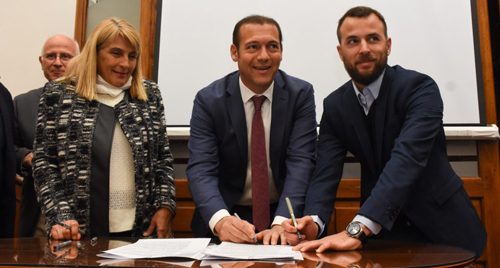The governor of the Argentine province of Neuquen has signed an agreement with the Salmon Trout Investment Group to double the country’s production of salmon trout (rainbow trout), reports Diario Rio Negro.
The focus of the agreement is on farmed trout, with the aim of exporting to the United States and Japan.
Government support
The provincial government wants to boost aquaculture development in the province, by increasing the production of rainbow trout by 4000 tonnes. The Salmon Trout Group is investing 4 million dollars in the project.
The province will support the building of the processing plant, fish slaughtering and cooling facilities built in the city of Piedra del Aguila. It also will provide 1,000 square meters of land for the installation of a hatchery, under a concession contract.
“This plant, which has state-of-the-art technology and science, will allow us to more than double our local production,” governor Omar Gutiérrez said.
Logistics and processing
The project also seeks to solve the bottlenecks involved in the production of salmonids in the province, linked to marketing in the domestic and international market, Gutiérrez added. “We will also cooperate with transport companies, to ensure the transportation of cargoes from Neuquén airport, to make sure that the trout quickly find their way to the international market.”
Salmon Trout representative Gabriel Morales said the area, with its river and basin, has great potential for aquaculture.
“But at this moment the scale of production is not yet appropriate for export levels, because logistics and processing are inefficient. We created the Salmon Trout group to promote aquaculture activity and to achieve the quality standards needed to market our products abroad.”
Investments and jobs
The new factory is expected to produce 4,000 tons of rainbow trout per year. At the moment about 3,500 tons are produced in the whole of Argentina, of which 1,500 tons are in Neuquen. The project is also expected to create 300 to 400 direct jobs.


